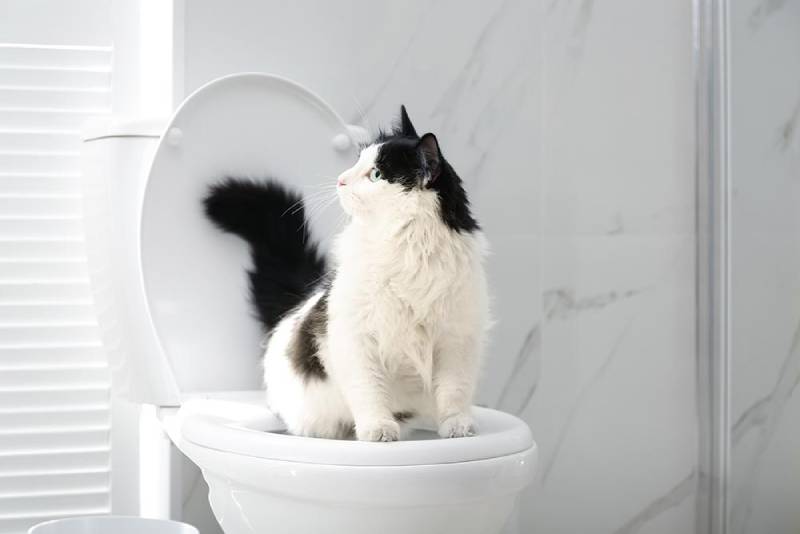What're your insights and beliefs about How to Dispose of Cat Poop and Litter Without Plastic Bags?

Introduction
As feline proprietors, it's vital to be mindful of how we take care of our feline close friends' waste. While it might appear convenient to flush pet cat poop down the commode, this technique can have damaging repercussions for both the setting and human health and wellness.
Alternatives to Flushing
Luckily, there are much safer and more liable ways to throw away feline poop. Consider the complying with choices:
1. Scoop and Dispose in Trash
One of the most usual approach of dealing with cat poop is to scoop it right into a naturally degradable bag and toss it in the trash. Make certain to use a specialized litter scoop and take care of the waste quickly.
2. Usage Biodegradable Litter
Opt for biodegradable feline clutter made from materials such as corn or wheat. These trashes are eco-friendly and can be securely disposed of in the trash.
3. Bury in the Yard
If you have a lawn, think about hiding cat waste in an assigned area away from vegetable gardens and water sources. Make certain to dig deep adequate to stop contamination of groundwater.
4. Mount a Pet Waste Disposal System
Buy a pet dog garbage disposal system specifically designed for cat waste. These systems make use of enzymes to break down the waste, lowering smell and environmental effect.
Health and wellness Risks
In addition to ecological worries, flushing cat waste can also pose wellness dangers to humans. Pet cat feces may include Toxoplasma gondii, a bloodsucker that can trigger toxoplasmosis-- a potentially serious illness, specifically for expectant ladies and people with damaged immune systems.
Ecological Impact
Purging pet cat poop introduces dangerous pathogens and bloodsuckers right into the supply of water, posturing a significant danger to marine communities. These pollutants can adversely affect marine life and concession water quality.
Final thought
Liable pet possession expands past providing food and sanctuary-- it additionally includes appropriate waste administration. By refraining from purging feline poop down the bathroom and choosing alternate disposal approaches, we can reduce our ecological impact and protect human health and wellness.
Why Can’t I Flush Cat Poop?
It Spreads a Parasite
Cats are frequently infected with a parasite called toxoplasma gondii. The parasite causes an infection called toxoplasmosis. It is usually harmless to cats. The parasite only uses cat poop as a host for its eggs. Otherwise, the cat’s immune system usually keeps the infection at low enough levels to maintain its own health. But it does not stop the develop of eggs. These eggs are tiny and surprisingly tough. They may survive for a year before they begin to grow. But that’s the problem.
Our wastewater system is not designed to deal with toxoplasmosis eggs. Instead, most eggs will flush from your toilet into sewers and wastewater management plants. After the sewage is treated for many other harmful things in it, it is typically released into local rivers, lakes, or oceans. Here, the toxoplasmosis eggs can find new hosts, including starfish, crabs, otters, and many other wildlife. For many, this is a significant risk to their health. Toxoplasmosis can also end up infecting water sources that are important for agriculture, which means our deer, pigs, and sheep can get infected too.
Is There Risk to Humans?
There can be a risk to human life from flushing cat poop down the toilet. If you do so, the parasites from your cat’s poop can end up in shellfish, game animals, or livestock. If this meat is then served raw or undercooked, the people who eat it can get sick.
In fact, according to the CDC, 40 million people in the United States are infected with toxoplasma gondii. They get it from exposure to infected seafood, or from some kind of cat poop contamination, like drinking from a stream that is contaminated or touching anything that has come into contact with cat poop. That includes just cleaning a cat litter box.
Most people who get infected with these parasites will not develop any symptoms. However, for pregnant women or for those with compromised immune systems, the parasite can cause severe health problems.
How to Handle Cat Poop
The best way to handle cat poop is actually to clean the box more often. The eggs that the parasite sheds will not become active until one to five days after the cat poops. That means that if you clean daily, you’re much less likely to come into direct contact with infectious eggs.
That said, always dispose of cat poop in the garbage and not down the toilet. Wash your hands before and after you clean the litter box, and bring the bag of poop right outside to your garbage bins.
https://trenchlesssolutionsusa.com/why-cant-i-flush-cat-poop/

As a devoted person who reads on Don’t flush cat feces down the toilet, I assumed sharing that piece of content was worthwhile. Sharing is nice. Helping people is fun. Thanks for going through it.
Free Estimates